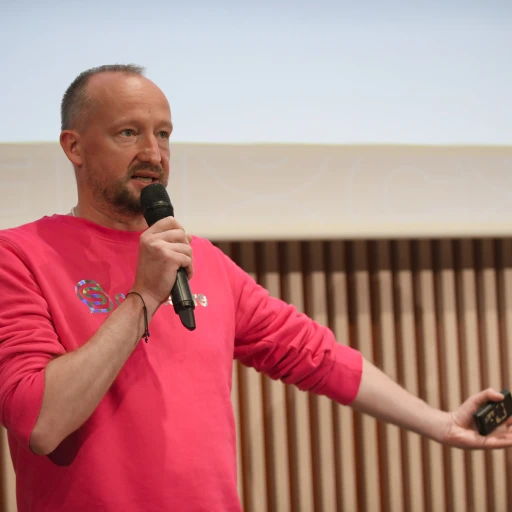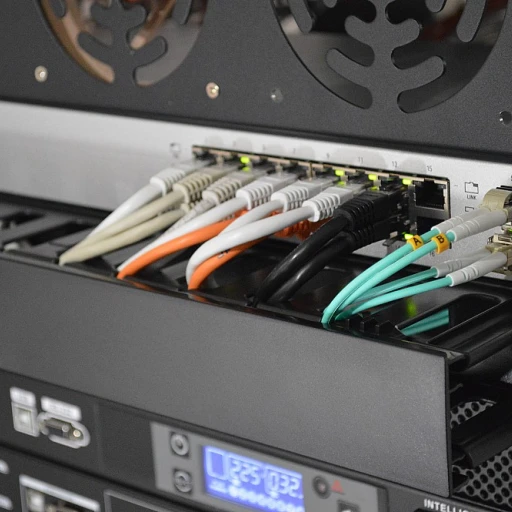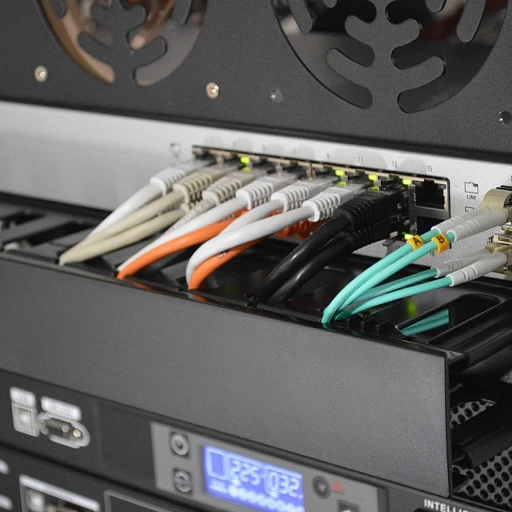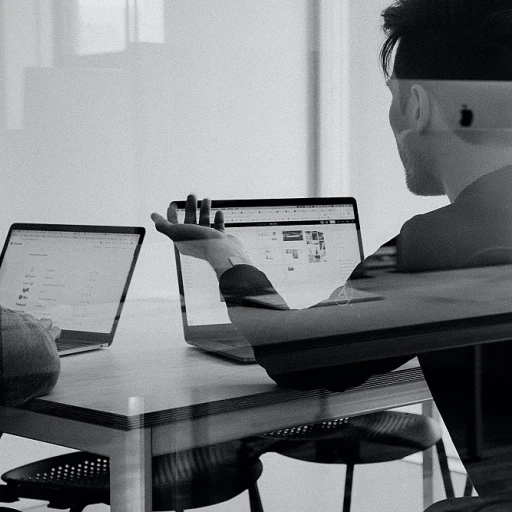Understanding Headless CMS
What is a Headless CMS?
In the world of content management, a headless CMS is a game-changer. Unlike traditional systems, which bundle the backend and frontend together, a headless CMS separates the two. This means the content management backend is decoupled from the frontend presentation layer. Think of it as a content management system that focuses on storing and delivering content via an API, without dictating how the content is presented to users.
How Does It Work?
The magic of a headless CMS lies in its API-driven approach. Content is stored in the backend and accessed through APIs, allowing developers to use any frontend technology to present the content. This flexibility is perfect for those who want to create unique digital experiences across various platforms, whether it’s a website, mobile app, or even IoT devices.
Why Go Headless?
There are several reasons why businesses are opting for headless CMS platforms. First, it offers unparalleled flexibility. Developers can choose the best tools and frameworks for their specific needs. Second, it supports faster content delivery, essential for real-time updates and global reach. Finally, it provides a seamless content management experience, especially for enterprises with complex needs.
Real-World Applications
Many organizations are already reaping the benefits of headless CMS. For instance, e-commerce platforms can use it to deliver consistent product information across multiple channels. Media companies can ensure their content is available on various devices without reformatting. Even educational institutions are leveraging headless CMS to provide interactive learning experiences.
If you're curious about how popular platforms like WordPress VIP are adapting to this trend, check out our detailed exploration of WordPress as a headless CMS.
Key Features to Look for in a Headless CMS
Must-Have Features in a Headless CMS
When you're on the hunt for a headless CMS, there are certain features you just can't ignore. These features make all the difference in how effectively you manage and deliver content across platforms.
- API-Driven Architecture: A headless CMS should offer a robust API. This is what allows you to connect your content to various platforms, be it web, mobile, or IoT devices. A strong API ensures seamless integration and real-time content delivery.
- Content Modeling: Flexibility in defining content types and structures is crucial. This feature lets you tailor content to your specific needs, enhancing the digital experience for your users.
- Scalability: As your enterprise grows, so will your content needs. A scalable CMS ensures you can handle increased traffic and content without a hitch.
- Security: With digital content, security is non-negotiable. Look for platforms that offer strong security features, including data encryption and user authentication.
- Multilingual Support: If your audience is global, multilingual capabilities are a must. This feature allows you to manage content in multiple languages, broadening your reach.
- Content Delivery Network (CDN): A CDN ensures your content loads quickly, no matter where your users are located. This is vital for providing a smooth user experience.
Why These Features Matter
Consider this: you're running an eCommerce site with a diverse product range. You need a CMS that can handle complex content structures and deliver them efficiently to various channels. A headless CMS with the right features can offer the flexibility and control needed to manage such dynamic content. For more insights, check out our article on the rise of headless CMS in eCommerce.
Platforms like Contentstack, Sanity, and Agility CMS are known for their strong API-driven capabilities and content modeling features. They offer the flexibility that modern developers crave, making them top contenders in the headless CMS space. Meanwhile, open-source options like Magnolia provide a customizable approach, which can be a game-changer for those who need a tailored solution.
In the next part, we'll explore some of the top headless CMS platforms available today, diving into what makes each unique and how they can fit into your content management strategy.
Top Headless CMS Platforms
Leading Headless CMS Platforms You Should Know
When it comes to content management, embracing a headless system can truly redefine digital experiences. Let's take a closer look at some standout headless CMS platforms that have been making waves for developers and enterprises alike.1. Contentful
Contentful is a standout in the world of headless CMS options. It offers businesses the freedom to create and manage digital content without the constraints of traditional CMS platforms. Known for its flexibility and robust API-driven solutions, Contentful is perfect for developers aiming for superior content delivery and modeling.2. Strapi
Strapi is an open source Headless CMS, delivering piles of customization and community support. Developers love its adaptability and the fact that it's based on JavaScript - getting started is a breeze. Strapi's strengths lie in real-time content management and its ability to seamlessly integrate with front-end frameworks.3. Sanity.io
Sanity.io emphasizes a content-first approach. It's not just about managing content; it's about amplifying the digital experience. With real-time collaboration, flexibility in content modeling, and robust support, Sanity.io is a magnet for teams looking to innovate.4. Contentstack
For enterprises seeking a reliable partner in content management, Contentstack is a force to be reckoned with. The platform provides extensive integrations and is especially favored for its performance and support in scaling digital experiences across channels.5. Agility CMS
Agility CMS strikes a balance between traditional and headless CMS platforms. Developers often admire its hybrid capabilities, allowing content to be delivered headlessly while also providing page management if needed. It's an ideal solution for businesses wanting user-friendly, yet versatile content management.6. Magnolia CMS
Magnolia CMS is an all-around performer and well-regarded for its Adobe-like experience capabilities. It's designed to support personalized digital experiences and offers notable flexibility for collaboration across teams. The platform ensures brand consistency while maximizing agility in content delivery. Each of these platforms offers unique features and strengths, tailored for diverse business needs. Choosing the right headless CMS depends on your project scope, team requirements, and digital strategy. By integrating a headless CMS, you're gearing up to deliver compelling, relevant content across your channels. For more insights on software tailored for tomorrow, explore this blog post.Challenges and Considerations
Understanding the Hurdles
When diving into the world of headless CMS, you're bound to encounter a few bumps along the way. One of the main challenges is the integration complexity. Unlike traditional CMS platforms, headless systems require a solid understanding of APIs and content modeling to ensure smooth content delivery across various digital experiences. This can be daunting for teams without technical expertise.
Balancing Flexibility and Control
Headless CMS platforms, like Contentstack and Sanity, offer incredible flexibility, but this can sometimes come at the cost of control. With a plethora of options, developers might find themselves overwhelmed by choices, leading to decision paralysis. Additionally, while platforms like Magnolia and Adobe Experience offer robust features, they may not always align perfectly with every enterprise's needs.
Real-Time Content Management
Real-time content management is another hurdle. While the promise of real-time updates is appealing, ensuring that these updates are reflected accurately across all channels can be a technical challenge. This requires a well-structured API-driven system and a reliable content delivery network.
Support and Maintenance
Support can be a make-or-break factor. Open source platforms offer freedom but often lack the dedicated support found in commercial solutions. On the flip side, enterprise platforms might provide extensive support but at a higher cost. Balancing these aspects is crucial for a seamless content management experience.
Cost Considerations
Budgeting for a headless CMS can be tricky. While some platforms, like WordPress VIP, offer a comprehensive package, they may not fit every budget. It's important to weigh the cost against the features and support offered, ensuring the CMS headless solution aligns with your project's goals.
For more insights on selecting the right CMS, check out our article on embracing the future of headless CMS for e-commerce.
Future Trends in Headless CMS
Charting the Path Forward for Headless Content Management
As we look ahead, several trends are shaping the future of headless CMS, promising to redefine how businesses manage content across digital channels. With shifts in technology, user expectations, and digital engagement strategies, it's crucial to understand what lies ahead.- API-Driven Innovations: Headless CMS platforms continue to leverage APIs for seamless integrations. This enables real-time content delivery and greater customization, empowering developers to create unique digital experiences. This flexibility is a significant draw for enterprises seeking to keep ahead in content management.
- The Rise of AI and Machine Learning: Automation through AI is already altering content management strategies. From enhanced content delivery methods to predictive analytics in user behavior, AI-driven systems are becoming integral in providing personalized digital experiences.
- Increased Adoption of Open Source Solutions: There is a notable trend towards open source headless CMS options, such as Strapi and Sanity. These platforms provide unmatched flexibility, allowing businesses to tailor content management systems to their specific needs without being locked into proprietary platforms.
- Growing Importance of Content Personalization: Personalized digital content is becoming the norm, requiring CMS platforms to support content modeling and user segmentation. Approaches like those offered by Adobe Experience Manager and Contentstack allow for nuanced targeting and content delivery to various audience segments.
- Enhanced Security and Privacy Measures: With data breaches and privacy concerns at an all-time high, headless CMS platforms are upping their game in security. Modern systems are focusing on secure API integrations and compliance with regulations like GDPR.
- Integration with Best-of-Breed Frontend Technologies: As tools like React, Vue.js, and Angular become more popular for creating dynamic interfaces, headless CMS need to adapt. This means better API support and compatibility with frontend site generators to deliver a seamless user experience.
Choosing the Right Headless CMS for Your Project
Finding the Perfect Fit
Choosing the right headless CMS can feel like picking the perfect pair of shoes. It's all about comfort, style, and the right fit for your needs. You want something that supports your digital ambitions without weighing you down. So, how do you make that choice?
Prioritize Your Needs
Start by listing what you need from a CMS. Are you looking for flexibility, robust API support, or perhaps a system that integrates seamlessly with your existing tech stack? Platforms like Contentstack and Sanity offer excellent API-driven capabilities, while Magnolia and Adobe Experience provide enterprise-level support and features. If you're keen on open-source solutions, exploring WordPress VIP as a headless CMS could be beneficial for your content management and delivery needs.
Consider the Content Experience
Think about how you and your team will interact with the CMS. A user-friendly interface can make content creation and management a breeze. Look for platforms that offer intuitive content modeling and real-time collaboration features. The ease of use can significantly impact productivity and the overall digital experience for your team.
Evaluate Support and Community
Good support can save you a lot of headaches. Whether it's through official channels or community forums, having access to help when you need it is crucial. Platforms like Agility CMS and Sanity often boast active communities and responsive support teams, ensuring you won't be left in the lurch.
Scalability and Future-Proofing
As your project grows, your CMS should be able to scale with you. Consider the platform's ability to handle increased traffic and content volume. Additionally, keep an eye on future trends in headless CMS technology to ensure your choice remains relevant and capable of supporting new digital experiences.
Real-World Examples
Sometimes, seeing how others have successfully implemented a headless CMS can provide valuable insights. For instance, companies using Contentstack have praised its agility and API-driven approach, while Adobe Experience users appreciate its robust feature set for enterprise-level content management.
In the end, the right headless CMS is the one that aligns with your project goals, offers the features you need, and supports your team's workflow. It's a decision that can shape your digital strategy, so take the time to explore your options and make an informed choice.















